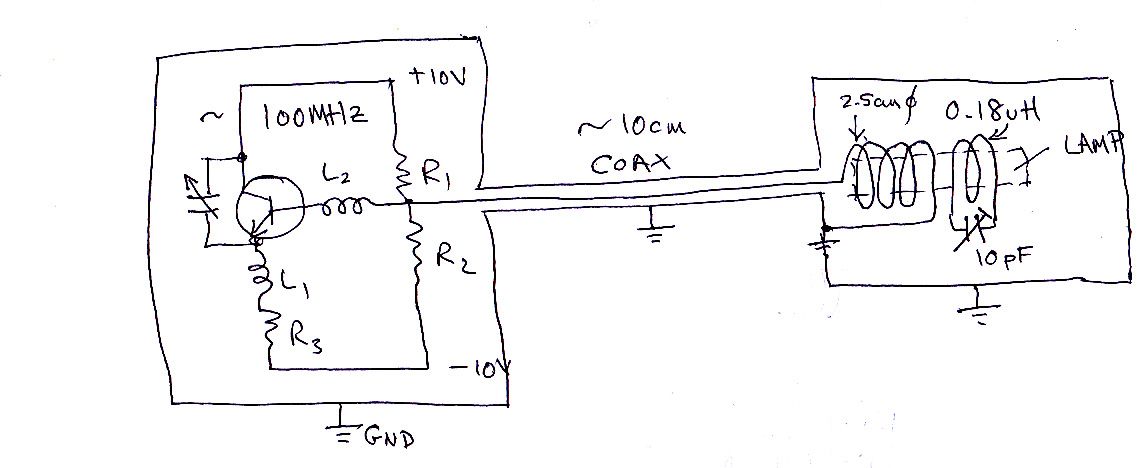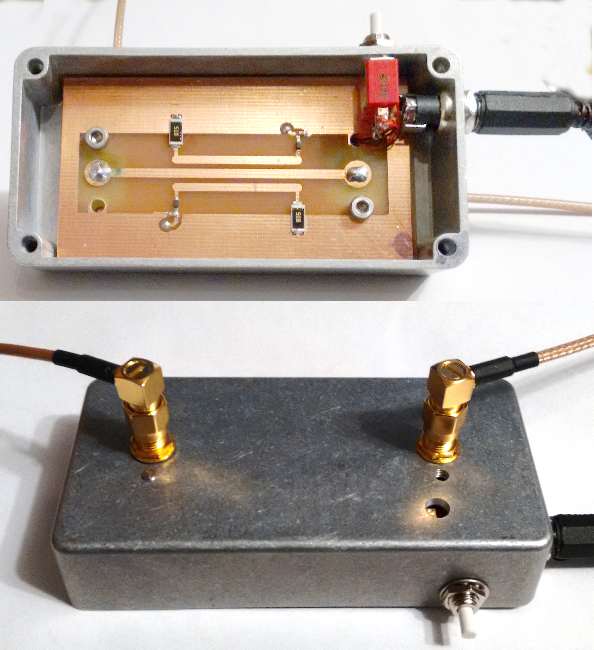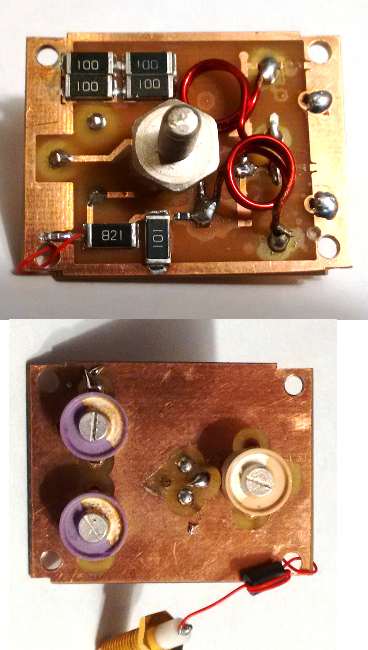Matching a 100MHz driver to an electrodeless lamp - via coax and coupled coils
I am considering connecting a 2.5 cm diameter coil between the output of the coax and ground and having another coil of maybe 2 turns (~180nH) as a parallel resonator with about 10pF capacitor across it. The two coils to be coxial and air-coupled.
The lamp sits coaxially within both coils.
Please see sketch here:

I have two questions:
(1) Does this arrangement sound feasible? And, if so, (2) can you suggest a simple capacitor and diode arrangement to measure reflected power so this can be minimized - an arrangement that doesn't draw of significant power itself.
Thanks for any input.
To ignite a plasma, you'll need a rather high electric field strength. In don't believe that it can be achieved in a parallel resonance configuration without impedance transformation. Do you have any references describing a similar low power electrodeless lamp?
Thanks for replying FvM. At this level of power as well as the configuration I'm on my own - the lamp works well when coupled via a single connected (ungrounded) coil and it also works through the coax with the same single coil but with less efficiency and less reliable starting.
The intention is to find an optimized matching while using the coax and hence my wish to measure reflected (and if possible forward) power.
Once the lamp has started it seems to form a resonant circuit together with the coil.
If you have any suggestion regarding a (hopefully) simple scheme for impedance transformation I'd be grateful.
I've done this in a sputtering system (low pressure argon plasma) using a parallel resonant air-coupled arrangement but then, as you say, the power level was vastly different (KWs).
A standard VSWR bridge would be the best way to determine reflected power.
Good to hear that the configuration is basically working. A reasonable scheme for impedance matching that includes a straight 1:1 matching is a LC pi filter.
The parallel LC circuit in your design has no external effect if in in resonance, and achieves only a small variable reactive load otherwise.
Thanks FvM - I made a SWR bridge with striplines on a PCB and it works well (if I can make sense of the readings).

I tried the pi arrangement but couldn"t get the lamp to start so then I coupled the above oscillator to via two cascaded series resonant circuits and thence, via a 10cm coax-to-SWR meter-to-10cm coax to a~50nH antenna coil coaxial with the discharge tube. When I tune the capacitor on the oscillator (having tuned the two series resonant circuits already) I can make the tube light up brightly every time -at least 100V appears at the tube. However, I need to tune to make it start. Certainly, then, the SWR is close to 1:1 and maximized.

Then I decided to replace the tuning capacitor with a 5-20pF varactor diode in series with a 1nF ceramic and biased via a choke off a pot. The oscillator worked pretty well but the varactor failed after a few minutes: is this likely due to high RF voltage in the oscillator"s series resonant circuit?
I suppose I must consider using a lower voltage varactor tuned stage coupled to an amplifier?
